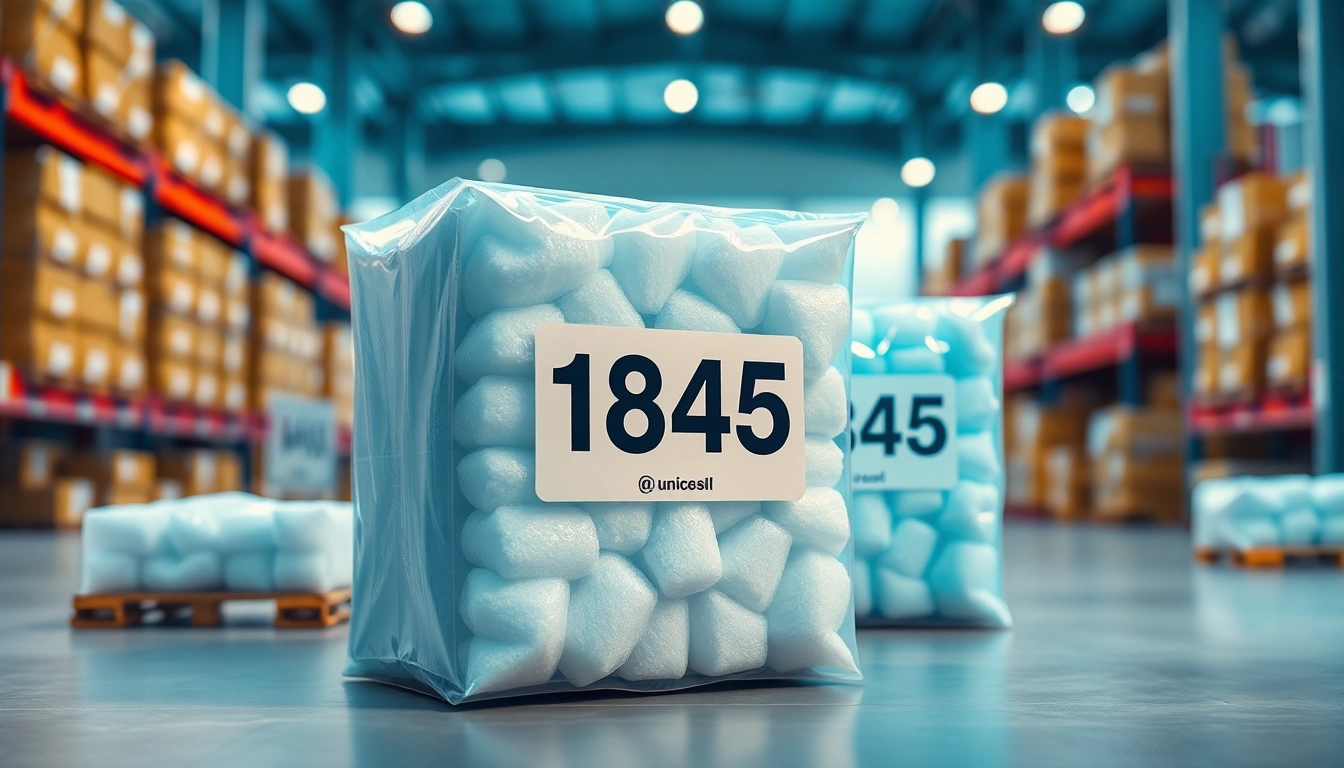Introduction to UN 1845
In the vast landscape of hazardous materials, un 1845 stands out as a critical identifier for the shipping and handling of dry ice, or solid carbon dioxide. As a substance classified as hazardous under various regulations, understanding UN 1845 is paramount for industries that rely on dry ice for transportation, especially in the food, pharmaceutical, and scientific sectors. This article delves into the intricacies of UN 1845, highlighting its importance, regulatory framework, required labeling, packaging protocols, and best practices for ensuring safe transport.
What is UN 1845?
UN 1845 refers to solid carbon dioxide, commonly known as dry ice. It is classified as a hazardous material due to its unique properties, which allow it to produce carbon dioxide gas when sublimated. This phase change occurs at -78.5°C, making dry ice an efficient refrigerant and important in preserving the integrity of temperature-sensitive products during transit. The designation UN 1845, categorized under Class 9, includes miscellaneous hazardous materials, indicating that, while dry ice is essential in various applications, it must be handled with care to prevent hazardous situations.
Importance of Proper Labeling
Correct labeling is crucial for the safe transportation of UN 1845. Specific regulations require that packages contain the correct UN number and hazard classification labels to inform handlers and transporters of the potential risks. The absence of proper labeling can lead to severe consequences, including mishandling and fines. Clear indications allow for efficient response strategies in emergencies and ensure that first responders understand the nature of the materials being transported.
Applications in Various Industries
UN 1845 has diverse applications across multiple sectors:
- Food Industry: In the food sector, dry ice is instrumental in transporting perishable goods like seafood, fruits, vegetables, and frozen products, helping preserve their freshness and quality during long-distance shipping.
- Pharmaceuticals: Temperature-sensitive medicines, vaccines, and biological materials often require dry ice to maintain a controlled environment throughout their transportation lifecycle.
- Scientific Research: Laboratories utilize dry ice for various applications, including freezing biological samples and preserving chemical reagents.
Packaging and Labeling Requirements for UN 1845
Key Packaging Considerations
Packaging for UN 1845 must comply with specific regulations to ensure safety during transport. Important considerations include:
- Insulation: Packages must resist thermal exchange to prevent sublimation and gas buildup. Using insulated containers can mitigate risks.
- Ventilation: The design should allow for gas escape, particularly to avoid pressure buildup within the container.
- Material Durability: Packaging materials should withstand transit stresses, including temperature fluctuations and physical impacts.
Labeling Specifications for Safe Transport
Labeling for UN 1845 must adhere to stringent guidelines, including:
- Displaying the UN number prominently on all sides of the package.
- Utilizing Class 9 hazard labels, which are specifically designed to indicate miscellaneous dangerous goods.
- Including appropriate warnings regarding the contents and the risks associated with dry ice, such as potential suffocation hazards when used in enclosed spaces.
Common Mistakes to Avoid
Ensuring compliance with UN 1845 standards can be challenging. Common mistakes include:
- Failing to use proper labels which can lead to miscommunication and unsafe handling.
- Using inadequate packaging that cannot withstand the rigors of transport.
- Neglecting to include necessary documentation that outlines the contents and handling instructions.
Compliance and Regulations Surrounding UN 1845
Regulatory Bodies and Their Roles
Several key regulatory bodies oversee the transportation of hazardous materials, including:
- Department of Transportation (DOT): The DOT provides regulations encompassing the safe transport of hazardous materials, including dry ice.
- Occupational Safety and Health Administration (OSHA): OSHA ensures workplace safety concerning hazardous materials and their handling.
- International Air Transport Association (IATA): Sets guidelines for transporting hazardous goods via air, which includes dry ice in passenger and cargo aircraft.
Packing Instructions Overview
Packing instructions for UN 1845 fall under regulations set forth by each governing body. General guidelines include:
- For air transport, specific packing instructions must be adhered to ensure the safe transport of dry ice.
- Using outer containers capable of withstanding pressure and temperature changes during shipping.
Consequences of Non-Compliance
Shipping UN 1845 without adhering to established guidelines can result in serious ramifications, including:
- Fines and penalties from regulatory authorities.
- Increased risk of accidents or hazardous situations that could endanger lives and the environment.
- Delays in shipping, leading to potential financial loss and damage to reputation.
Best Practices for Shipping Dry Ice
Temperature Control Techniques
Ensuring effective temperature control during the shipment of dry ice is vital. Best practices include:
- Utilizing well-insulated containers designed specifically for dry ice shipping.
- Monitoring temperatures throughout the journey to ensure the integrity of the products.
- Employing temperature loggers that provide real-time data on temperature fluctuations during transport.
Handling Procedures for Shipping Staff
Staff should be trained on the proper handling of UN 1845 to mitigate risks. Key procedures include:
- Comprehensive training on hazardous material handling and emergency procedures.
- Clear communication regarding the risks associated with dry ice and how to operate safely with this material.
- Implementing standard operating procedures for loading, unloading, and transporting dry ice.
Emergency Response for Spills
Establishing an emergency response plan for dry ice spills or incidents is crucial. Best practices involve:
- Developing clear protocols that define specific steps to take in case of a spill or emergency.
- Providing staff with access to personal protective equipment (PPE) appropriate for the situation.
- Regular drills to ensure preparedness in case of an emergency.
Conclusion and Future Outlook for UN 1845 Shipping
Innovations in Dry Ice Transportation
As technology advances, innovations are emerging that can enhance the safety and efficiency of shipping UN 1845. These include:
- Smart packaging that monitors temperature and gas levels within the container.
- Improved insulating materials that maintain lower temperatures longer, reducing sublimation rates.
- Integration of IoT technology for real-time data tracking and reporting on shipments.
Final Thoughts on Safety and Efficiency
Shipping dry ice safely under the UN 1845 classification is paramount to protecting people, property, and the environment. Companies that prioritize adherence to regulations and best practices not only ensure legal compliance but also contribute to operational efficiency and safeguarding their reputation.
Resources for Further Learning
For readers looking to deepen their understanding of UN 1845, consider the following resources:
- Understanding the Regulations Around Shipping Dry Ice
- Federal regulations on hazardous materials transport – visit the Department of Transportation’s website.
- International guidelines from the International Air Transport Association (IATA) on dry ice transportation.



